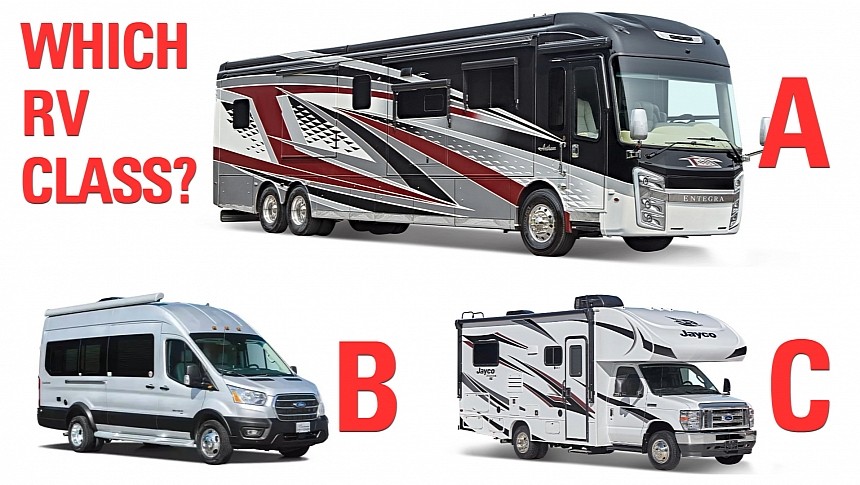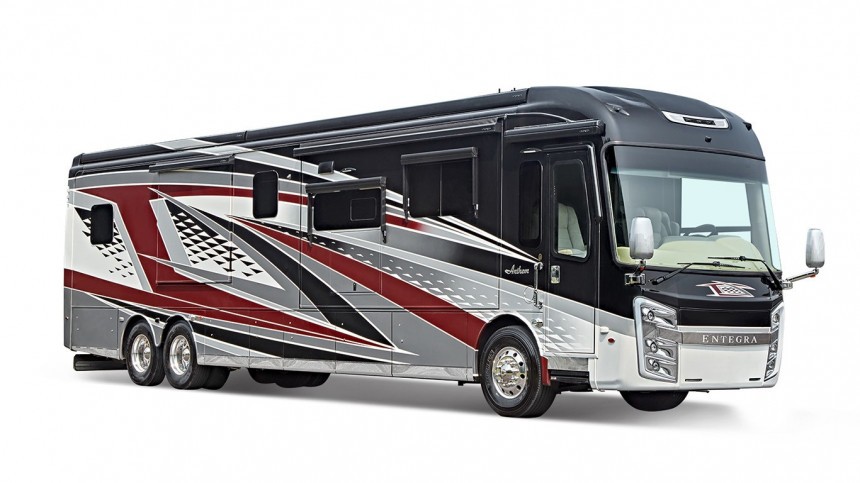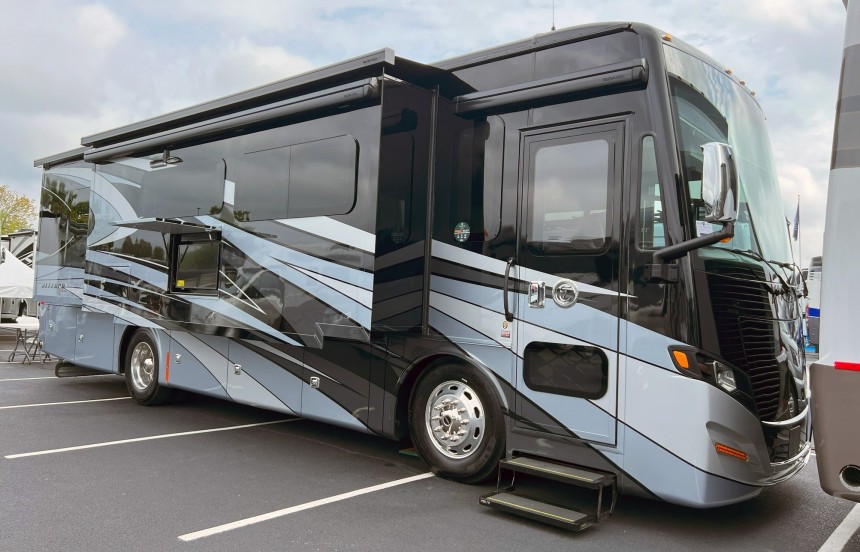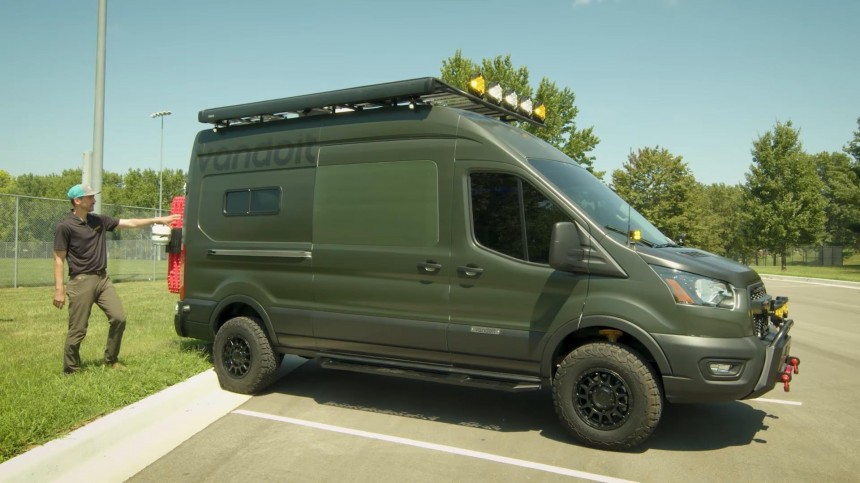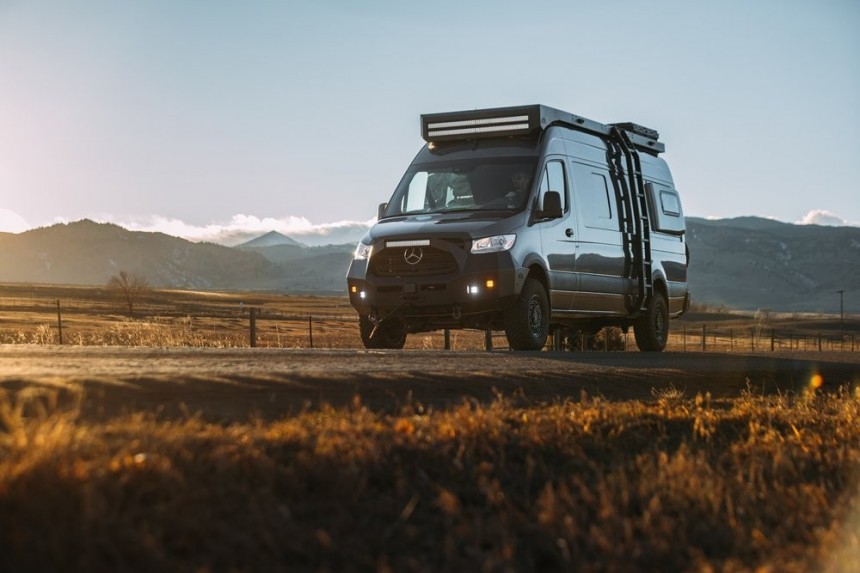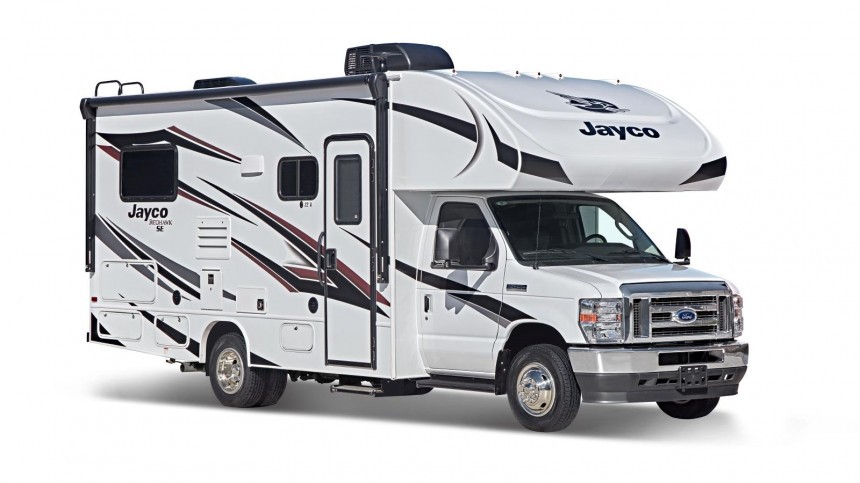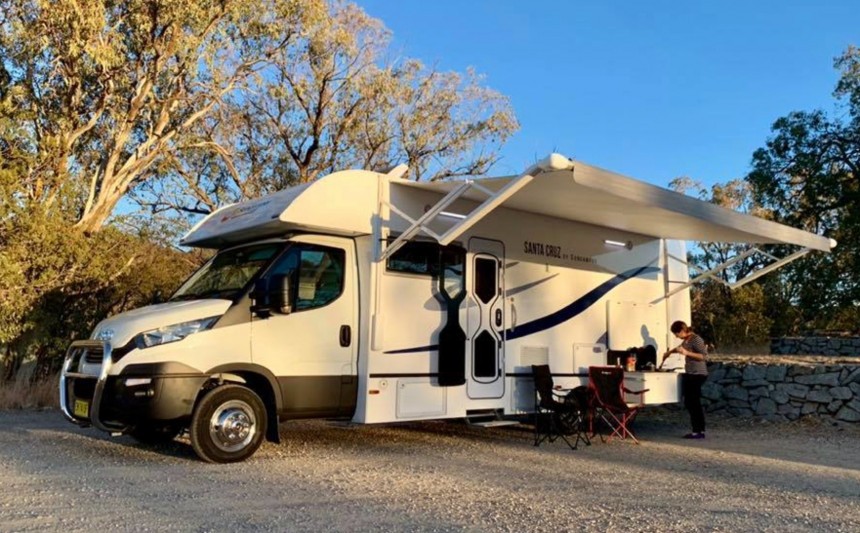Nowadays, RVs are more popular than ever. If you're reading this article, chances are you're considering buying or at least renting an RV and enjoying all the perks that come with the mobile home lifestyle. Today, I will explain the three RV types and list some of the pros and cons for each.
First, let's take a quick look at the industry. The RVIA (RV Industry Industry Association) is the national trade association representing RV manufacturers and their component parts suppliers. Together, they build over 98% of all RVs produced in the United States.
The RVIA carries out various studies regarding the RV industry in the United States. Here are some numbers you should know about. It found out that the industry's overall economic impact on the US economy adds up to around a staggering $140B. What's more, the median age of new RV buyers is 32 years old, and 39% of new RV buyers got their hands on an RV because they wanted a place to live while exploring the outdoors while still having access to remote work.
RVs come in many different forms, so if you're interested in a tiny home on wheels, there's a high chance you'll find something to suit your needs. There are three main classes available: A, B, and C. The first thing you should know is that the term "Classes" refers solely to motorhomes. RV stands for "Recreational Vehicles," so technically, you can also count travel trailers, fifth wheels, and more. I'll write a separate article for these – today, we'll be focusing on the three classes.
So, a motorhome means that the motor vehicle and living space are on the same chassis, so there is no towing involved. Moreover, the living area is always accessible from both the exterior and the interior of the vehicle.
Class A motorhomes are the biggest type of motorized RVs – it's close to impossible to miss them on the road due to their sheer size. They look similar to buses and are usually built on a commercial bus or truck chassis.
Class A RVs can range anywhere from 26 to 45 feet long and can accommodate up to ten people. They're typically the closest you get to a conventional home on wheels, as they're known for their luxurious, home-style amenities, seemingly endless storage spaces, and their open floor plans.
The maximum width of Class A motorhomes is around 8 feet, although some states allow up to 8.5 feet width. Furthermore, these RVs typically tip the scales between 13,000 and 30,000 pounds.
Just like with cars, they can sport either gas or diesel engines. The latter category can be classified as either diesel pushers or diesel pullers, depending on where the engine is located. As you might figure out from their names, diesel pushers have the engine in the back, while diesel pullers have it in the front.
Diesel ones often have a higher resale value and more torque, which also means a higher towing capacity, and like other diesel-powered vehicles, they have a longer lifespan. At the same time, they will probably cost more to maintain and operate than gas-powered Class As.
Some Class A homes are toy haulers, meaning they have a portion dedicated to storing other vehicles.
If you're looking to become a full-time RVer, the Class A motorhomes are probably your best bet. That's because of their comprehensively equipped interior. Let me tell you what you can expect to find in most of these mobile homes.
Some of the most common features include a king-size bed, multiple bathrooms (or at least a very well-equipped single bathroom), a washer/dryer combo, a large living room, and a fully-equipped kitchen.
Another thing you often find on these types of motorhomes is slideouts. At the press of a button, you can extend part of the RV's floor and walls outward, adding extra square footage in mere seconds. Some even come with multiple slideouts, enabling you to create immense additional space.
So, who are they most popular with? Class A RVs are a popular choice for people with mobile lifestyles, especially retirees who seek the most comfort while living on the road. However, one of the drawbacks is that, due to their size and weight, you have to be mindful of the destination you want to go to. For instance, steep and potholed roads, as well as narrow roads, are big no-nos for these vehicles. Luckily, most of the US infrastructure is built for larger vehicles, but there still will be plenty of roads you shouldn't drive on.
I'll continue with some more drawbacks. Because they're designed by a factory to offer so much comfort, you can expect most Class A motorhomes to come with a high price tag. The same goes for when you want to insure it and repair it – the costs might quickly add up.
If you're used to conventional cars, driving such a massive rig might also come with a learning curve. From the legal standpoint, the DMV laws state that if you're driving any vehicle under 26,000 pounds, you're clear to go with a regular operator's driver's license. So, most motorhomes can be driven with a standard license. Still, it will be a different experience that some might need to adjust to.
Given their sheer size, most motorhomes will have a low fuel efficiency – depending on how much you travel, you'll need to take that cost into consideration. A lower-end coach's price will start at around $60,000, while a high-end one can have a price tag of half a million dollars, although it can go much higher, in the range of several millions of dollars.
On the other hand, if you buy a motorhome, you won't have to worry about outfitting it, as most contain all living amenities on board. Moreover, as I mentioned, they offer the most storage space from all types of RVs, and many are designed to offer a luxurious experience.
Another pro is that if you want to tow a trailer or another vehicle, you can certainly do that with most motorhomes.
One issue with Class As is storage and parking. You'll have a harder time finding a place to park, and some campsites might now allow vehicles this big.
Class B RVs, also known as camper vans, are my specialty – I've written hundreds of articles about them. Of course, they're by far my favorite choice on this list, and I'll tell you why in just a bit.
Class B motorhomes are much smaller than Class As and are, in fact, the smallest type of RVs (even though the "B” designation might make you think they're the middle option regarding size). They're the closest you'll get to a conventional car.
Basically, they're normal vans modified to serve as tiny homes on wheels. They're about as long as a run-of-the-mill van, with a length between 17 and 19 feet, although you'll find certain vehicles outside this interval. Moreover, they usually tip the scales between 6,000 and 8,000 pounds.
When it comes to equipment, Class Bs can range from basic features, like a bed and storage, to a fully-equipped mobile home with a bathroom, dining area, and all sorts of deluxe features. Due to the compact space, van designers use ingenuity and creativity to make the interior spaces livable.
If you're unfamiliar with Class B camper build, just know that there are many layouts and designs you can choose from. Some are all about practicality, while others prioritize aesthetics. Ultimately, it depends on your exact needs to determine what the best features are for you. With camper vans and van life so popular nowadays, there's no doubt you can find something that floats your boat.
Of course, if you can't find any pre-built vans that you like, there's always the possibility of doing a DIY conversion. Many people with no experience have managed to build excellent campers, and there are countless resources online you can access that will guide you through such a conversion.
Usually, most camper vans come with a kitchen with a sink, some counter space, and a tiny cooktop. When it comes to sleeping, some rigs can accommodate up to six people, although if you plan on living in one full-time, two to three people is often the limit for a comfortable experience.
Who are Class B RVs for? The vehicles' smaller size comes with some advantages. For instance, if you have a tighter budget, Class B vehicles will probably be your best choice. Most range between $40,000 to $80,000, although there are some builds that go way past that point, even up to $300K. The same goes the other way – you can build a decent camper van for less than $40K.
Camper vans serve as an excellent mobile base for outdoor activities, so they can be the perfect weekend getaway machine. Moreover, they have way better fuel efficiency compared to other RVs, and driving them won't feel so much different than driving a conventional car.
They're easy to transport, and repairing and maintaining them (of course, depending on the exact model) will generally be cheaper than other types of RVs. Furthermore, it's easier to find parking due to their compact size.
If you're an off-roading enthusiast, Class Bs are by far the ideal choice. There are many ways to modify such a van to go off the beaten path, and some manufacturers prepare their vehicles for that straight from the factory.
At the same time, their size makes some people feel claustrophobic if they spend lots of time in them. Storage space is always an issue, but you can mitigate that by devising clever ways to store things.
Many camper vans don't come with a bathroom. And for those that do, it's typically quite cramped. Moreover, the amenities you can fit inside don't compare to those on a Class A motorhome, so you'll have to be content with not having a dishwasher, washer/dryer combo or any other larger appliances.
What makes Class C RVs instantly recognizable is the distinctive cab extending over the cockpit. They fall right in between Class As and Class Bs, both regarding size and comfort. They're most commonly built on a cutaway van' (also known as a box truck) chassis.
You can consider them as a more budget-friendly cousin of the Class A RV. Although they might look similar to a Class B vehicle, they're considered more of a motorhome rather than a camper van.
Class C vehicles range anywhere from 20 to 35 feet long and can accommodate up to eight people, although typically, around 4 to 6 will fit comfortably. In most cases, their weight falls somewhere between 10,000 and 14,000 pounds.
However, you'll find even bigger variants that are close to 40 feet long and sleep up to 10-12 people. They are known as Super C RVs and use medium-duty trucks as bases. Not only are they longer, but they provide more cargo inside and can tow more.
So, what makes these mobile homes stand apart? They're known to offer multiple sleeping spaces, good fuel efficiency, and accessibility. Moreover, many Class C motorhomes are built on Ford chassis, making it easier to repair and maintain it due to Ford's extensive dealership network. It also means you can usually find the necessary parts for repairs or replacements.
When it comes to the driving experience, Class C RVs are easier to drive than larger motorized RVs due to a tighter turning radius and less wind drag. Still, they're powerful enough to offer decent towing capacities.
Who are these RVs for? Class Cs are a more affordable option if you're looking for a vehicle larger than a camper van, yet you don't want to spend a fortune on a Class A motorhome. Prices can differ significantly, but with a touch of luck, you could find a new vehicle at around $35,000 - $40,000. Of course, if you decide on an older model, you can go lower than that and invest the rest of the money into a nice restoration.
Class Cs are often rented by larger groups for a trip away, as they provide sufficient space for families and groups of friends (unlike most camper vans). Most are equipped with generators, real wood cabinets, leather furniture, multiple bathrooms, entertainment features, and more. You can also get a private bedroom in the back, which is not that common on camper vans.
The general rule is that you get better equipment than on Class Bs, although not as good as the one on Class As. There are also models with slideouts, just like on Class As, that can further extend the living space.
One thing to take into consideration is that Class C RVs are sometimes too small to tow a trailer or another vehicle, although it all depends on the model.
Class Cs are a true middle option. They ideally balance space and price, providing more space than a camper van and more mobility than a Class A motorhome. For instance, you are still able to access most national and state parks with one.
The many different floor plans available can allow you to find the perfect one to suit your needs. Moreover, they have great versatility – they're big enough for a longer getaway yet compact enough for a short escape.
And there you have it – hopefully, this guide sheds some light on the types of RVs available. One thing to know with pretty much any RV is that you need to figure out your exact needs before getting one. Go out there and rent one and see if this lifestyle is for you. It's the best way of figuring out which vehicle will be the best for you without a significant investment.
Let me also name some other considerations when choosing an RV. Check out your state's registration and licensing requirements, which are often overlooked when people purchase a recreational vehicle.
Some RVs have a reputation for having immense maintenance fees. Do your research on maintenance and fuel costs to see if a certain is a good option for how you're going to use it. Storage is also critical – make sure you have a place to store it when it's not in use.
The RVIA carries out various studies regarding the RV industry in the United States. Here are some numbers you should know about. It found out that the industry's overall economic impact on the US economy adds up to around a staggering $140B. What's more, the median age of new RV buyers is 32 years old, and 39% of new RV buyers got their hands on an RV because they wanted a place to live while exploring the outdoors while still having access to remote work.
RVs come in many different forms, so if you're interested in a tiny home on wheels, there's a high chance you'll find something to suit your needs. There are three main classes available: A, B, and C. The first thing you should know is that the term "Classes" refers solely to motorhomes. RV stands for "Recreational Vehicles," so technically, you can also count travel trailers, fifth wheels, and more. I'll write a separate article for these – today, we'll be focusing on the three classes.
Class A RV
Class A motorhomes are the biggest type of motorized RVs – it's close to impossible to miss them on the road due to their sheer size. They look similar to buses and are usually built on a commercial bus or truck chassis.
Class A RVs can range anywhere from 26 to 45 feet long and can accommodate up to ten people. They're typically the closest you get to a conventional home on wheels, as they're known for their luxurious, home-style amenities, seemingly endless storage spaces, and their open floor plans.
The maximum width of Class A motorhomes is around 8 feet, although some states allow up to 8.5 feet width. Furthermore, these RVs typically tip the scales between 13,000 and 30,000 pounds.
Just like with cars, they can sport either gas or diesel engines. The latter category can be classified as either diesel pushers or diesel pullers, depending on where the engine is located. As you might figure out from their names, diesel pushers have the engine in the back, while diesel pullers have it in the front.
Diesel ones often have a higher resale value and more torque, which also means a higher towing capacity, and like other diesel-powered vehicles, they have a longer lifespan. At the same time, they will probably cost more to maintain and operate than gas-powered Class As.
Some Class A homes are toy haulers, meaning they have a portion dedicated to storing other vehicles.
Some of the most common features include a king-size bed, multiple bathrooms (or at least a very well-equipped single bathroom), a washer/dryer combo, a large living room, and a fully-equipped kitchen.
Another thing you often find on these types of motorhomes is slideouts. At the press of a button, you can extend part of the RV's floor and walls outward, adding extra square footage in mere seconds. Some even come with multiple slideouts, enabling you to create immense additional space.
So, who are they most popular with? Class A RVs are a popular choice for people with mobile lifestyles, especially retirees who seek the most comfort while living on the road. However, one of the drawbacks is that, due to their size and weight, you have to be mindful of the destination you want to go to. For instance, steep and potholed roads, as well as narrow roads, are big no-nos for these vehicles. Luckily, most of the US infrastructure is built for larger vehicles, but there still will be plenty of roads you shouldn't drive on.
I'll continue with some more drawbacks. Because they're designed by a factory to offer so much comfort, you can expect most Class A motorhomes to come with a high price tag. The same goes for when you want to insure it and repair it – the costs might quickly add up.
If you're used to conventional cars, driving such a massive rig might also come with a learning curve. From the legal standpoint, the DMV laws state that if you're driving any vehicle under 26,000 pounds, you're clear to go with a regular operator's driver's license. So, most motorhomes can be driven with a standard license. Still, it will be a different experience that some might need to adjust to.
Given their sheer size, most motorhomes will have a low fuel efficiency – depending on how much you travel, you'll need to take that cost into consideration. A lower-end coach's price will start at around $60,000, while a high-end one can have a price tag of half a million dollars, although it can go much higher, in the range of several millions of dollars.
On the other hand, if you buy a motorhome, you won't have to worry about outfitting it, as most contain all living amenities on board. Moreover, as I mentioned, they offer the most storage space from all types of RVs, and many are designed to offer a luxurious experience.
Another pro is that if you want to tow a trailer or another vehicle, you can certainly do that with most motorhomes.
One issue with Class As is storage and parking. You'll have a harder time finding a place to park, and some campsites might now allow vehicles this big.
Class B RV
Class B motorhomes are much smaller than Class As and are, in fact, the smallest type of RVs (even though the "B” designation might make you think they're the middle option regarding size). They're the closest you'll get to a conventional car.
Basically, they're normal vans modified to serve as tiny homes on wheels. They're about as long as a run-of-the-mill van, with a length between 17 and 19 feet, although you'll find certain vehicles outside this interval. Moreover, they usually tip the scales between 6,000 and 8,000 pounds.
When it comes to equipment, Class Bs can range from basic features, like a bed and storage, to a fully-equipped mobile home with a bathroom, dining area, and all sorts of deluxe features. Due to the compact space, van designers use ingenuity and creativity to make the interior spaces livable.
If you're unfamiliar with Class B camper build, just know that there are many layouts and designs you can choose from. Some are all about practicality, while others prioritize aesthetics. Ultimately, it depends on your exact needs to determine what the best features are for you. With camper vans and van life so popular nowadays, there's no doubt you can find something that floats your boat.
Of course, if you can't find any pre-built vans that you like, there's always the possibility of doing a DIY conversion. Many people with no experience have managed to build excellent campers, and there are countless resources online you can access that will guide you through such a conversion.
Who are Class B RVs for? The vehicles' smaller size comes with some advantages. For instance, if you have a tighter budget, Class B vehicles will probably be your best choice. Most range between $40,000 to $80,000, although there are some builds that go way past that point, even up to $300K. The same goes the other way – you can build a decent camper van for less than $40K.
Camper vans serve as an excellent mobile base for outdoor activities, so they can be the perfect weekend getaway machine. Moreover, they have way better fuel efficiency compared to other RVs, and driving them won't feel so much different than driving a conventional car.
They're easy to transport, and repairing and maintaining them (of course, depending on the exact model) will generally be cheaper than other types of RVs. Furthermore, it's easier to find parking due to their compact size.
If you're an off-roading enthusiast, Class Bs are by far the ideal choice. There are many ways to modify such a van to go off the beaten path, and some manufacturers prepare their vehicles for that straight from the factory.
At the same time, their size makes some people feel claustrophobic if they spend lots of time in them. Storage space is always an issue, but you can mitigate that by devising clever ways to store things.
Many camper vans don't come with a bathroom. And for those that do, it's typically quite cramped. Moreover, the amenities you can fit inside don't compare to those on a Class A motorhome, so you'll have to be content with not having a dishwasher, washer/dryer combo or any other larger appliances.
Class C RV
You can consider them as a more budget-friendly cousin of the Class A RV. Although they might look similar to a Class B vehicle, they're considered more of a motorhome rather than a camper van.
Class C vehicles range anywhere from 20 to 35 feet long and can accommodate up to eight people, although typically, around 4 to 6 will fit comfortably. In most cases, their weight falls somewhere between 10,000 and 14,000 pounds.
However, you'll find even bigger variants that are close to 40 feet long and sleep up to 10-12 people. They are known as Super C RVs and use medium-duty trucks as bases. Not only are they longer, but they provide more cargo inside and can tow more.
So, what makes these mobile homes stand apart? They're known to offer multiple sleeping spaces, good fuel efficiency, and accessibility. Moreover, many Class C motorhomes are built on Ford chassis, making it easier to repair and maintain it due to Ford's extensive dealership network. It also means you can usually find the necessary parts for repairs or replacements.
When it comes to the driving experience, Class C RVs are easier to drive than larger motorized RVs due to a tighter turning radius and less wind drag. Still, they're powerful enough to offer decent towing capacities.
Who are these RVs for? Class Cs are a more affordable option if you're looking for a vehicle larger than a camper van, yet you don't want to spend a fortune on a Class A motorhome. Prices can differ significantly, but with a touch of luck, you could find a new vehicle at around $35,000 - $40,000. Of course, if you decide on an older model, you can go lower than that and invest the rest of the money into a nice restoration.
The general rule is that you get better equipment than on Class Bs, although not as good as the one on Class As. There are also models with slideouts, just like on Class As, that can further extend the living space.
One thing to take into consideration is that Class C RVs are sometimes too small to tow a trailer or another vehicle, although it all depends on the model.
Class Cs are a true middle option. They ideally balance space and price, providing more space than a camper van and more mobility than a Class A motorhome. For instance, you are still able to access most national and state parks with one.
The many different floor plans available can allow you to find the perfect one to suit your needs. Moreover, they have great versatility – they're big enough for a longer getaway yet compact enough for a short escape.
And there you have it – hopefully, this guide sheds some light on the types of RVs available. One thing to know with pretty much any RV is that you need to figure out your exact needs before getting one. Go out there and rent one and see if this lifestyle is for you. It's the best way of figuring out which vehicle will be the best for you without a significant investment.
Let me also name some other considerations when choosing an RV. Check out your state's registration and licensing requirements, which are often overlooked when people purchase a recreational vehicle.
Some RVs have a reputation for having immense maintenance fees. Do your research on maintenance and fuel costs to see if a certain is a good option for how you're going to use it. Storage is also critical – make sure you have a place to store it when it's not in use.
